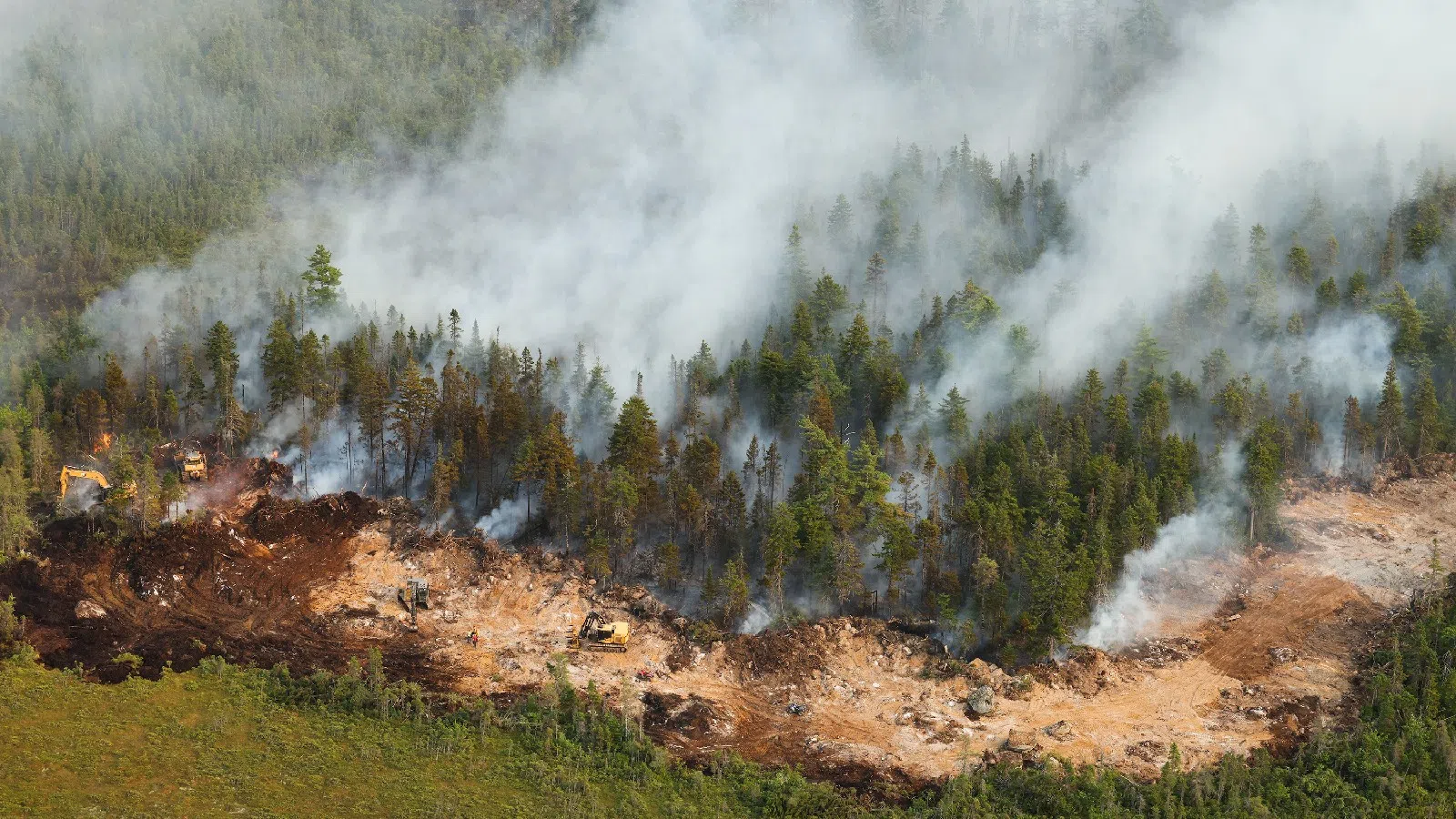The Long Lake wildfire in Annapolis County has grown again to about 8,278 hectares and remains out of control, however no new homes have been evacuated.
In a press conference, Wednesday afternoon, Dave Steeves on the incident management team with the Department of Natural Resources (DNR) said, unfortunately despite making good progress Tuesday, conditions are about to dry up again- and that is not good.
“For the next couple of days, we are going to be moving into a situation where fire behavior is going to start moving forward,” said Steeves. “We are currently sitting in very serious drought conditions, so fuel is dry and ready for combustion.”
He added, the rain that fell on Monday was a nice reprieve, but now it is time to get back to “business mode”.
“Every day that passes and no precipitation that comes with it, the situation gets a bit more dire,” said Steeves.
Evacuated homes
There are 330 homes that have been evacuated, some have been damaged, other lost.
The exact number of homes that have been damaged or destroyed is still unclear.
Andrew Mitton, Director of Regional Operations for the Department of Emergency Management said it was still too dangerous to get a good assessment, but they are hoping to get a closer look in the next day or two.
Annapolis MLA acknowledges difficult time
The MLA for Annapolis County, David Bowlby said is heart is with all the families affected.
In a statement to our newsroom, he thanks the crews who are working around the clock including pilots, firefighters, equipment operators, volunteers, DNR and the province.
He added, they are doing everything they can do protect people and property.
How long will it take to put the fire out?
The fire expanded about 250 hectares into Wednesday.
According to Steeves, considering how dry it is, it doesn’t take much for that to happen.
“It got into some favorable fuels, and the wind hit it in the right direction. Given the drought conditions, that is all it takes to get some pretty good spread,” said Steeves.
Jim Rudderham, director of fleet and forest protection would not give a specific timeline on how long it will take to extinguish but said it is big and serious.
“There is a lot of perimeter to get around. It has a lot of interior to get put out. That’s going to take a lot of equipment to do that. All that equipment, when it’s finally extinguished, is going to have to be removed. So, we are going to be there for a while,” said Rudderham.
Six helicopters, six planes and bird dogs are all included in the fight Wednesday, as well as 36 DNR crews, 62 Ontario and 59 local firefighters plus heavy equipment operators.











